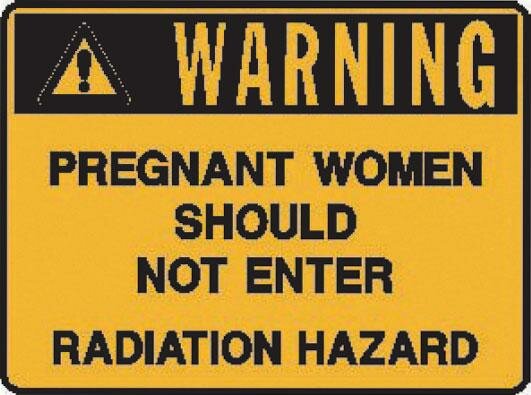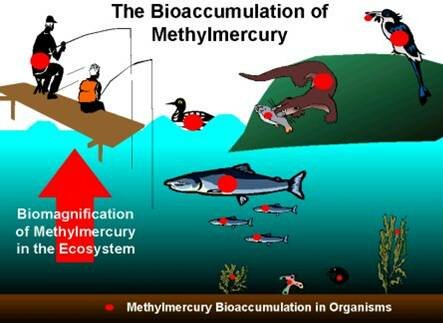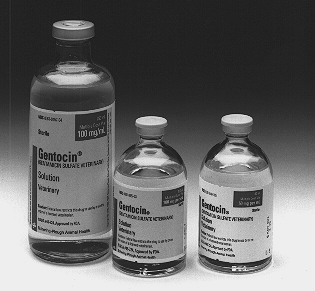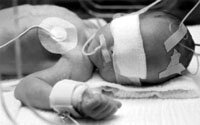Top 10 Harmful Teratogens
Suggested by SMSThe meaning of Teratogens has come from two Greek root words. Terata stands for an abnormally developed and unusually looking fetus, and “-gen” means production. Teratogens are chemical, biological or physical factors that might cause an abnormal development of a fetus in the mother’s womb. Remarkably, during the pregnancy there are a few periods when the action of teratogens can be more or less severe. The first week of pregnancy reflects a phenomenal rule “all-or-nothing”: the conceptus either dies under effect of teratogens or survives without any harm from them. A period between three to eight weeks of pregnancy is considered to be the most critical. During this time all organs of the embryo start to form and they are incredibly sensitive to harmful factors. Exposure to teratogens in this period can cause severe malformations of the baby, or even death. In a later term, between nine weeks and until birth, teratogens can be a reason of impaired function of the baby’s organs and can affect future mental and physical development.
10. Ionizing Radiation
High dose of ionizing radiation over a short period of time leads to abnormal brain development, mental retardation, and leukemia in children. This information has come from studies of consequences the atomic bomb explosions over Hiroshima and Nagasaki. However, medical diagnostic x-ray procedures have much smaller dose of radiation and appear to be safe even with several performed procedures during pregnancy. There is a different situation with a computer tomography (CT) diagnostic procedure. Even a single computer tomography scan (CT-scan) creates a radiation exposure dose that equals to tens of x-rays and should be avoid during pregnancy.
9. Chemicals
Organic mercury (methylmercury) compounds can be extremely dangerous for the developing fetus in a small dose that would not bring any symptoms to an adult human. Pregnant women should not eat some type of fish with possible high methylmercury levels as this mercury compound would be easily delivered to the baby’s body. An individual can find more detailed information about contaminated fish at www.seafoodwatch.org . Organic mercury exposure can lead to damage of neural system, mental retardation, behavioral and cognitive problems, and blindness in a baby.
Lead exposure, received through some leaded glass products and pottery that have contact with food, can be a culprit of spontaneous abortions, delayed fetal development, increased risk of infant death, or abnormal mental or physical development of the child.
Large doses of potassium iodine, found in anti-cough syrups or medical cocktails for x-ray diagnostic, can be a cause of abnormal thyroid development and function in a fetus. This effect will lead to mental retardation or cretinism in a child.
Polychlorinated biphenyls (PCBs) were linked to delayed fetal growth, abnormal neural system development, and impaired behavioral and cognitive functions in a child. Products containing PCBs were banned in the late 1970s. Since that time level of PCBs in the environment is gradually declining. Pregnant women should avoid PCBs exposure by not consuming some types of fish, washing and possibly peeling fruits and vegetables before eating them, and not handling old fluorescent lumps or old mechanisms with hydraulic or heat transfer fluids.
8. Category D Drugs
About 30 years ago, the United States Food and Drug Administration (FDA) created a list of pharmaceuticals or drugs categories from A–no teratogenic effect was shown, to X–very strong evidence of teratogenic effect on a human fetus, prohibited to use during pregnancy. Many countries have similar lists of drugs allowed or prohibited for use during pregnancy.
Category D drugs include several drugs with definite teratogenic effect on a human fetus. However, in some situations these drugs can be used if benefits of drug use outweigh potential risk. Among these drugs are several antibiotics, neurologic, and psychiatric drugs.
7. Category X Drugs
Category X drugs should not be used during pregnancy because their teratogenic risks outweigh drugs benefits. Among these Category X drugs is thalilomide. Thalilomide was widely used in many countries in the late 1950s as a sedative and anti-nausea drug. In fact, it was often prescribed to prevent pregnancy related “morning sickness”. The result of use of this highly teratogenic drug was catastrophic: thousands of babies were born with severely underdeveloped arms and legs, multiple defects of internal organs, and facial abnormalities. Thalilomide use was called, “One of biggest medical mistakes” and this drug was withdrawn from the market in the early 1960s. This tragic outcome paved the way for much stricter drug tests for and drug prescriptions to pregnant women. In fact, in the U.S.A. thalilomide impact was minimal as FDA inspector Dr. Frances Kelsey had refused to approve thalilomide for sale in the U.S.A. pharmaceutical market after she analyzed some speculations about possible teratogenic effects and inquired more investigations.
On September 2005 in Trafalgar Square in London, the statue of one of the people who was born with birth defects caused by thalilomide was erected. It was a statue of a British artist Alison Lapper. Ms. Lapper presented this project as a symbol for equal opportunities for people who were born looking different in the 21 century. More information about Ms. Lapper and her projects is on the official site: www.alisonlapper.com
Category X drugs includes birth control and fertility drugs, an oral medication used for treatment of severe acne, some anti-cancer and anti-seizure drugs.
6. Toxoplasma

Toxoplasma is a single-celled protozoa—“pre-animal”—that can be an infection of other animals. Cats are known hosts of toxoplasma and a human might be infected after handling the infected cat’s feces and not washing hands properly after that action. Toxoplasma may also be contracted by eating undercooked meats, trying raw minced meat while cooking, or not washing hands or utensils properly after meat handling. If a pregnant woman was never exposed to toxoplasma before pregnancy and had not developed the immunity, the obtaining of toxoplasma infection during pregnancy can be extremely dangerous to the baby. It can lead to spontaneous abortion or delivery of the dead infant; or the baby might have underdevelopment of the brain, brain calcifications, blindness, and seizures.
5. Syphilis Bacteria

Syphilis is a sexually transmitted disease caused by very small, corkscrew shaped bacteria—Treponemes. If left untreated, this disease progresses through three clinical stages, causing severe damage to a person’s health. If a pregnant woman has syphilis and is not treated quickly, these tiny bacteria travel with her blood to the baby’s body. Syphilis infection can be a cause of fetal death and spontaneous abortion, or can result in the delivery of the dead baby, or the baby can die within several days of life. If the baby survives, there is a high risk that this baby will have copious nasal discharge (snuffles) packed with treponemes and severe inflammatory reaction as a consequence, destroying nasal cartilages and bones. The baby will likely suffer from liver and spleen enlargement and dysfunction, meningitis or meningoencephalitis, and inflammatory skin rash—all of these are symptoms of early congenital syphilis. Some babies will not develop signs of early congenital syphilis, but around eight years of age or older they will demonstrate symptoms of late congenital syphilis: their vision will become deteriorated due to inflammatory changes in eyes, some of their central permanent teeth will have unusual conic shape and notching, and they may become deaf with complaining of vertigo and ringing in the ears. Their bones will be deformed, resulting in the look of “saddle” nose and “saber” shins.
4. Viruses
Viruses are incredibly small live particles composed of RNA or DNA that cannot produce their own energy for multiplication. In fact, they are parasites that live on certain cells of other creatures, called viral hosts. A virus penetrates the host’s cell and uses the host’s cellular mechanism for its own multiplication by millions of viral copies inside of the cell. Finally, millions of new viruses will leave the cell either killing it or creating certain damage. These new millions of viruses will target other cells of the viral host, one virus per one cell, to produce more viral copies and create more damage on the host’s cells. Most of the time, the host’s immune system will defeat these invaders. However, loss of certain cells or their damage in a growing fetus can be catastrophic. Certain types of viruses are well-known to create birth defects.
- Rubella or German measles virus exposure to the fetus can be a culprit of congenital heart defects, deafness, and blindness. Rubella virus can also be a cause of abnormal brain development and other internal organs, and creates characteristic bluish-red skin lesions known as “blueberry muffin spots.” Fortunately, if the mother had rubella in the past or was vaccinated against the rubella virus before pregnancy, her immune system will eliminate the rubella virus before it can reach the fetus.
- Cytomegalovirus (CMV) is the most common type of fetal infection because of the ubiquitous nature of this virus. Fortunately, 90% of the babies born with CMV exposure have no symptoms. However, in some babies, CMV can be a cause of underdevelopment of the brain, calcifications inside of the brain, blindness, deafness, dysfunction of the liver and spleen, jaundice or lesions on the skin known as “blueberry muffin spots.”
- Herpes virus infection, in about 5% of cases, can infect a baby in the uterus. The consequences are catastrophic—from fetal death to permanent problems like underdevelopment and/or calcification of the brain, blindness, or abnormal limb formation. If the herpes virus was acquired by the baby during or just after the delivery, the baby will get herpetic pneumonia or meningoencephalitis.
- Varicella zoster virus is a cause of chickenpox (mostly in children), and herpes zoster or shingles (mostly in seniors). If a pregnant woman would contract varicella zoster virus for the first time during the pregnancy, there is a 25-40% risk that the fetus will have underdeveloped limbs, brain or eye malformations, and specific zig-zag skin scarring. If varicella zoster virus was transmitted to the baby just before the delivery, an infant can suffer from severe varicella zoster pneumonia. Like with rubella virus, if the mother had chickenpox in the past or was vaccinated against the rubella virus in her childhood or before pregnancy, her immune system will eliminate the rubella virus before it can reach the baby.
3. Cocaine and Amphetamine
Cocaine and amphetamine act on nerve cells and nerve fibers. In medical practice, cocaine compounds are sometimes used for local anesthesia; amphetamine compounds are used to treat some neurologic or psychiatric disorders. Cocaine and amphetamine are also well-known recreational drugs of abuse. They belong to the stimulant type of abused recreational drugs, creating similar affects of euphoria, increased capacity, and self-esteem. Some individuals develop drug dependence very quickly, and these drugs are easy to overdose. Pregnant women who use cocaine or amphetamine during pregnancy put their children at risk for the abnormal development of many organs. For instance, cocaine use was linked to the development of hollows (cysts) in a baby’s brain. Amphetamine use has shown evidence of congenital heart defects. Both cocaine and amphetamine use during pregnancy may lead to low birth weight, or even to the fetal or infant death. Babies born to mothers who use cocaine or amphetamine may have cocaine or amphetamine dependency, and severe symptoms of drug withdrawal. Such children usually have behavioral and learning problems in the future due to damage of brain cells. Cocaine is a known cause for placental abruption, a rapid tear of the blood vessels in the placenta that joins the baby’s body with a mother. Placental abruption can lead to the death of the infant, and the mother, if medical help is not delivered immediately.
2. Nicotine
Nicotine is a highly addictive chemical substance found in tobacco products. Smoking, chewing tobacco or even second-hand cigarette smoke exposure during pregnancy delivers nicotine to the mother’s blood and has a significant impact on the mother’s body and on the fetus. Additionally, cigarette smoke contains other toxic substances like cyanides and carbon monoxide. One of nicotine’s effects is an action on blood vessels and the reduction of blood flow in the uterus. This effect lasts much longer than the time of tobacco exposure. As the result, not enough nutrients are delivered to the baby and nicotine creates fetal “starvation.” Decreased blood flow in the uterus is also a cause of diminished oxygen delivery to the fetus and a reason of fetal hypoxia, when the developing baby cannot “breathe” normally. These nicotine effects lead to fetal growth retardation, premature delivery, and low birth weight. Avoiding nicotine during pregnancy would help to elude its teratogenic action on the baby.
1. Alcohol
The most common effect of alcohol impact on an unborn child is mental retardation. Alcohol is extremely toxic to developing brain cells. In fact, consumption of alcohol during pregnancy is the leading cause of mental retardation in children. This very sad consequence can be easily avoided if a pregnant woman would not consume alcoholic beverages during pregnancy. Alcohol may also be a cause of birth defects like an abnormally small head, abnormally small eyes or other deformities in the middle portion of the face, congenital heart defects, and deformities of the legs or arms. Consumption of alcoholic drinks during pregnancy is also a common cause of delayed fetal growth and a low birth weight that can have a remarkable negative impact on a child’s physical and mental health in the future.
Time when the baby is growing in mother’s uterus is extremely important for this human well-being and appropriate development in a future. Even if there are no absolute measures to avoid all possible teratogens, future parents should do their best to know about teratogenic effects on a baby and to prevent teratogenic exposure on their baby. Happy and healthy child make happy parents.


















Oh Yeah the virus doesn't cause Birth defects. Sorry poor reading on my part.